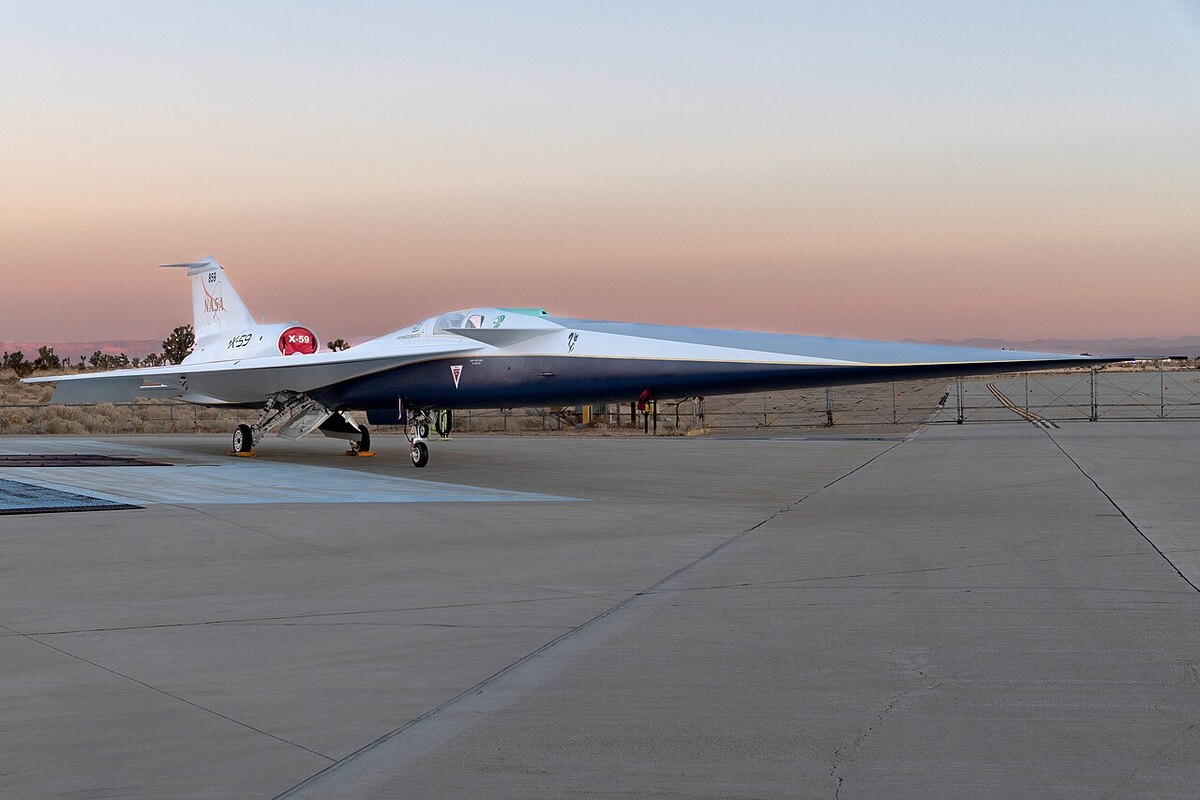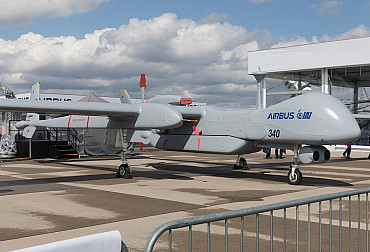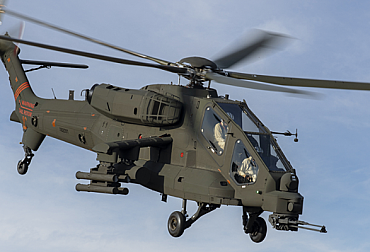Lockheed Martin’s X-59 Breaks the Sound Barrier Without a Sonic Boom
NASA and Lockheed Martin have successfully completed the first flight of the X-59, an experimental supersonic aircraft that could revolutionize supersonic transport by transforming the deafening sonic boom into a mere whisper.

On the morning of 28 October 2025, in California, at 09:17 local time, the needle-nosed X-59 lifted off from Lockheed Martin’s Palmdale Plant 42 on runway 22, climbed smoothly to 12,000 feet, and eight minutes later touched down at Edwards Air Force Base, 60 kilometres to the east. No roar, no thunder—just the soft whistle of a General Electric F414-GE-100 engine and the faint rustle of high desert wind. This was not a stunt; it was the birth certificate of quiet supersonic travel.
The flight lasted exactly 486 seconds. The aircraft cruised at 200 knots (370 km/h), never exceeding 0.32 Mach, yet every sensor, actuator and line of code behaved perfectly. “It flew like the simulations promised—only better,” said NASA test pilot Jim “Bones” Less immediately after shutdown. Lockheed Martin’s chief engineer, Michelle Evans, added: “We just proved that 55 years of physics can be rewritten in eight minutes.”
Beginning in March 2026, the same aircraft will climb to 55,000 feet above the Mojave, accelerate past Mach 1.4 (1,490 km/h), and fly over selected American cities. Instead of the 105–110 EPNdB clap that ended Concorde’s career, ground microphones will record a 75 EPNdB thump—no louder than a car door closing 20 metres away. That 30-decibel difference is the gap between prohibition and permission.
How does a 32-metre aluminium arrow silence a sonic boom? The answer lies in shape. The X-59’s fuselage is 30% than its wingspan, forcing shock waves to stretch and weaken before they reach the ground. A canoe-shaped underside prevents the classic N-wave from forming. Air enters the engine through a dorsal inlet hidden from the pressure field below, while a needle-sharp cockpit canopy slices the airflow like a scalpel. Every external seam is faired to within 0.2 millimetres; even the pitot tubes are recessed. The result is a pressure signature that arrives on the ground as a gentle ripple.
The stakes are measured in trillions. The FAA’s 1973 ban on civil supersonic flight over land locked away half the planet’s city pairs. Lift the ban and Tokyo–Los Angeles shrinks to four hours, London–New York to three. Morgan Stanley estimates a $260 billion market for 2,000 quiet-supersonic airliners by 2040. Cargo carriers dream of same-day trans-Pacific perishables. Lockheed Martin’s Skunk Works has already signed letters of intent with three start-ups—Boom Supersonic, Spike Aerospace, and Hermeus—for licensed X-59 technology.
Defence sees opportunities too. A quiet boom means stealthy boom: the same shaping principles can cloak a hypersonic strike drone or shrink the acoustic footprint of a B-21 tanker flying at Mach 1.2. DARPA has quietly budgeted $180 million to graft X-59 acoustics onto its “Gremlins” air-launched UAV programme. The Air Force Research Laboratory is studying a Mach 1.4 VIP transport that could evacuate a head of state before adversaries hear the engines.
Behind the glamour stands a decade of public-private partnership. NASA invested $650 million; Lockheed Martin matched every dollar. Some 1,800 engineers in Palmdale, Fort Worth and Marietta turned 42,000 drawings into 1.1 million parts. The cockpit windshield alone—quartz fused at 1,650 °C—cost $11 million and took three years to certify. Wind-tunnel time at Langley, Ames and Glenn consumed 14,000 hours. When the aircraft rolled out in January 2024, its paint scheme was still classified; only last month did the public learn that the underside glows pale blue to scatter radar.
The road ahead is mapped in four phases. Phase 2, beginning spring 2026, will fly 20 supersonic missions over Barstow, California, while 10,000 residents log reactions on a NASA smartphone app. Phase 3 moves to six cities—Seattle, Denver, Atlanta, Nashville, Philadelphia and Boston—gathering 500,000 data points. Phase 4 delivers a 400-page acoustic dossier to the FAA and ICAO by December 2028. If regulators accept 75 EPNdB as the new global standard, the first passenger flights could lift off in 2035.
A brief timeline reminds us how far we have come. In 1947 Chuck Yeager broke Mach 1 and rattled windows across the Antelope Valley. In 1968 the Boeing 2707 promised 2,700 passengers a day across the Atlantic—until the boom killed it. In 2003 Concorde bowed out, leaving only fighters free to supercruise. In 2025 the X-59 has closed the circle: speed without punishment.Tonight, under the floodlights of Edwards Hangar 1601, the lone X-59 sits chained to the concrete, its 94-foot shadow stretching toward the Joshua trees. Tomorrow the chains come off again, and the desert will hear only a heartbeat where once there was thunder. Somewhere above, the future of flight is already whispering.









